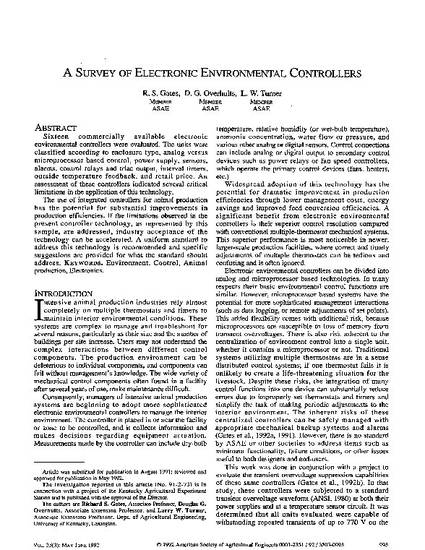
Sixteen commercially available electronic environmental controllers were evaluated. The units were classified according to enclosure type, analog versus microprocessor based control, power supply, sensors, alarms, control relays and triac output, interval timers, outside temperature feedback, and retail price. An assessment of these controllers indicated several critical limitations in the application of this technology.
The use of integrated controllers for animal production has the potential for substantial improvements in production efficiencies. If the limitations observed in the present controller technology, as represented by this sample, are addressed, industry acceptance of the technology can be accelerated. A uniform standard to address this technology is recommended and specific suggestions are provided for what the standard should address.
This work was funded in part by a joint grant from the Electric Power Research Institute (EPRI) and the National Rural Electric Cooperative Association (NRECA) that was administered by the National Food and Energy Council, and a gift from Shinwa International.
The investigation reported in this article (No. 91-2-73) is in connection with a project of the Kentucky Agricultural Experiment Station and is published with the approval of the Director.
Available at: http://works.bepress.com/richard-gates/104/

Published in Transactions of the ASAE, v. 35, issue 3, p. 993-998.
© 1992 American Society of Agricultural Engineers
The copyright holder has granted the permission for posting the article here.